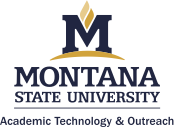Teacher Resources
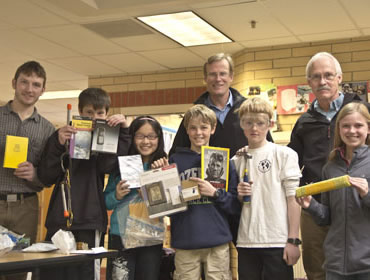
Cultivate children's interest science and the world around them using this broad range of educational resources. From standards-based lesson plans to informal activities that can be used at home or in any setting, the Expedition created resources on a diverse range of subjects from geology to ecology.
The Everest Education Expedition developed several types of educational resources for people to learn more about Mount Everest while enhancing their understanding of science, technology, engineering, and mathematics (STEM). These resources were created by Montana State University with support from Montana EPSCoR and many emphasize the relationship between the Everest region and the Northern Rocky Mountains. This Everest project was part of a larger EPSCoR effort called “CLimate in My Backyard” (CLIMB) that will be launching in the fall of 2012.
Everest Education Expedition Climbers' Journal
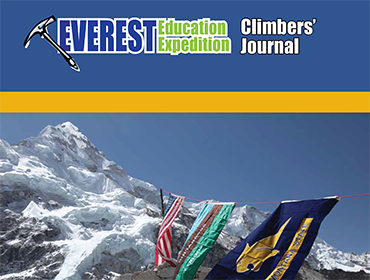
A scientific expedition to Mount Everest featuring journal entries from Dr. David
Lageson and Travis Corthouts,
Montana State University Department of Earth Sciences
- Climbers' Journal [2.2 MB PDF]
Throughout the three-month journey to Everest and back home again, Dr. Lageson and Travis Corthouts, a Montana State University geology graduate student, shared their experiences, adventures and research findings with students and teachers throughout the world.
Their story is captured here, through the photos, journal entries and videos that Dave and Travis sent back from the Himalayas. Though Conrad, Dave, Travis and all the team members have long since returned safely to their homes, your students can relive the Everest journey through this climbers’ journal and accompany lesson plans, which are part of a larger educational effort called CLimate in My Backyard (CLiMB).
You can read your students the Everest dispatches by chapter, interspersing the day-to-day journal entries with lessons from the curriculum package. Or, share each day’s new adventure and accompanying multimedia on the schedule that works best for your class.
The Everest Education Expedition lessons were not designed to correlate directly with the climbers’ journal chapters, although teachers may choose to insert lesson plans and educational resources in at any point.
Mount Everest Curriculum & Lesson Plans
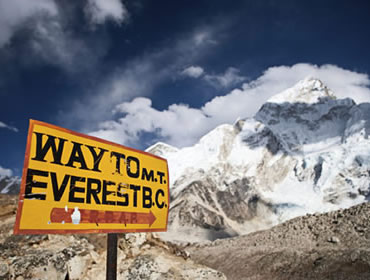
This curriculum was designed for 5th grade but could be used for other age groups. It features eight lessons, each 40-45 minutes long and extensions for taking each topic further.
Classroom Activities: Research Gear and Equipment
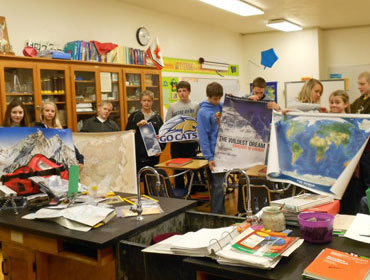
Several classrooms in Montana received Everest Education Expedition gear and equipment that allowed students to mimic the scientific research of the 2012 EEE team. The following activities were developed to complement these teaching kits, but can be used by any classroom that can acquire the necessary gear and equipment. When appropriate, links for purchasing equipment are included.
Classroom Connection
The Everest Expedition Classroom Connection is a site for all teachers and students participating in the expedition from their classrooms to share information, experiences and ideas. Participants can post photos, lesson plans, or just see where the other participating schools are located. If your class is a Classroom Connection member you'll be able to communicate directly with Dave and Travis on the mountain! If you're not yet a Classroom Connection member please email MJ at MSU Extended University at [email protected] to set up a username and password for your classroom. Non-members can still read the posts, but are not allowed to comment or ask questions.
MSU Science Zone
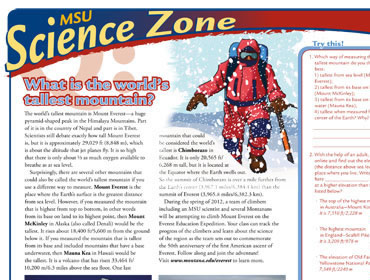
MSU Science Zones are short one page worksheets that ask a question, provide a basic answer to the question, and offer a short activity related to the topic. They can be used in any classroom, museum, summer camp, or even at home.
Other Resources

- Recommended Books for Children and Adults [110 kb PDF]
- Expedition Milestones/Schedule [330 kb PDF]
Partner Websites
How Tall Can Mountains Be?
Check out this short video from the folks at MinuteEarth. If you like this one, you can subscribe to their YouTube Channel and enjoy many more science-related videos.
Alpine Glacial Features Quiz
Dr. Dave Lageson created this short quiz while at Everest Base Camp. See how many alpine glacial landforms you can identify!
- Alpine Glacial Features Quiz [950 kb PPT]
- Alpine Glacial Features Quiz KEY [53 kb PDF]
Mount Everest Poems
In his tent one night at Everest Base Camp, Dr. Dave Lageson composed this poem as the glacier creaked and groaned beneath him. Dave hopes students in Montana and beyond will be inspired to write their own poems about the Himalayas or the places that are special to them. Dave's poem, as well as poems contributed by students, are below.
- Mount Everest Poem: Dave [95 kb PDF]
- Mount Everest Poems: Class Submissions [1.5 MB PDF]
Everest Points Format: Choose your own Adventure
Myrna Matulevich, from St. Matthew's School in Kalispell, developed this activity/points format for her 6th, 7th, and 8th graders, and wanted to share her idea with other teachers. Thanks, Myrna!
- Everest Points Format [57 kb PDF]
Content Standards Addressed for Science and Math
This curriculum was designed to meet Montana fifth-grade science standards. The six science content standards indicate what all students should know, understand, and be able to do in science. Their purpose is to guide the science curriculum and to communicate the breadth of the science to be taught to all students. A district's curriculum should be designed so that learning encompasses all six standards.
- MT Content Standards [49 kb PDF]
Montana Science Standards:
- Standard 1: Students, through the inquiry process, demonstrate the ability to design, conduct, evaluate, and communicate the results and form reasonable conclusions of scientific investigations.
- Standard 2: Students, through the inquiry process, demonstrate knowledge of properties, forms, changes and interactions of physical and chemical systems.
- Standard 3: Students, through the inquiry process, demonstrate knowledge of characteristics, structures and function of living things, the process and diversity of life, and how living organisms interact with each other and their environment.
- Standard 4: Students, through the inquiry process, demonstrate knowledge of the composition, structures, processes and interactions of Earth's systems and other objects in space.
- Standard 5: Students, through the inquiry process, understand how scientific knowledge and technological developments impact communities, cultures and societies.
- Standard 6: Students understand historical developments in science and technology.
Curriculum Developers
Kristin Dantagnan
Kristin Dantagnan is an educator in Bozeman, Montana. She has a M.A. in Curriculum and Instruction from Dominican University in San Rafael, California and has over 15 years experience in the elementary school classroom. Kristin has a passion for sharing the outside world, near and far with her students. She is an avid outdoor enthusiast and embraces every season the Rocky Mountains has to offer her. Running on dirt, riding on roads, and skiing in the woods brings her solace.
Angie Hewitt Weikert
Angie Hewitt Weikert is the Education Director of Early and Elementary Programs for the Museum of the Rockies in Bozeman, Montana. She has a M.S. in Science Education from Montana State University and has taught in both formal and informal settings for ten years. Angie enjoys creating life-long learners from a wide range of budding scientists from babies to senior citizens. When she's not surrounded by groups of children at the Museum or developing curriculum, you can find her playing in Montana's mountains and rivers.
Jamie Cornish
Jamie Cornish is the science outreach and education specialist at Montana State University's Extended University. Before moving to Montana, Jamie worked in New York City at Sesame Workshop conducting audience research on programs such as Sesame Street and Dragon Tales. In addition, Jamie was the national manager of public relations at the Walt Disney Company for Discover Magazine where she developed publicity and marketing strategies. Jamie has a B.A. from Princeton University in East Asian Studies, as well as an M.Phil. and a Ph.D. in education from Cambridge University in England.
Suzi Taylor
Suzi Taylor is the assistant director for outreach and communications for Montana State University's Extended University. She has worked on many science outreach projects, including NanoDays, Expanding Your Horizons and NASA's astrobiology education and outreach program. Suzi has also taught many science and technology courses, including "Communicating Science to the Public" for MSU graduate and undergraduate students, and "New Technologies: What's the Big Deal?" for the Wonderlust lifelong learning organization.

